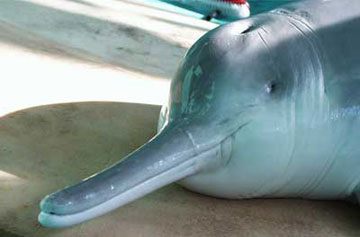A survey of twelve species lost to extinction over the past ten years.
No one can say with any certainty how many species went extinct from 2000-2009. Because no one knows if the world’s species number 3 million or 30 million, it is impossible to guess how many known species—let alone unknown—may have vanished recently. Species in tropical forests and the world’s oceans are notoriously under-surveyed, leaving gaping holes where species can vanish taking all of their secrets—even knowledge of their existence—with them.
It is also difficult to know when a species is truly gone. Some species reappear after they were thought to be extinct for decades, sometimes even centuries. Officially, species are usually not considered “extinct” until ample time passes without a sighting, for example, fifty years. Still, with many biologists and conservationists warning that we are in the midst of a human-caused mass extinction which may prove even larger than the demise of the dinosaurs, it is important to recognize likely vanished species before we know for certain they are gone, if only to remind ourselves of our impact and our failures.
Scientists have announced a number of likely extinctions (as well as extinctions in the wild) over the past ten years and here we look at twelve.

|
The Yangtze River, extinction hotspot: The most publicized extinction over the past decade is the baiji, also known as the Yangtze River Dolphin.
While the baiji’s evolution goes back 20 million years, it couldn’t survive China’s great development boom. A combination of dams, boat traffic, pollution, overfishing, and electro-fishing led to the species demise giving the baiji the dubious title of the first marine mammal to go extinct since the 1950s. The dolphin was a character in Chinese myths and was colloquially known as the ‘Yangtze River Goddess’, but none of this could save it from an economic juggernaut.
But the baiji is not alone, another denizen of Yangtze may have vanished recently. A recent survey of the Chinese paddlefish, one of the world’s largest freshwater fishes, failed to find even a single individual. While researchers believe the fish probably still survives, no one knows for certain—and no one knows how long it can persist in highly degraded habitat. The Chinese paddlefish has been decimated due to the same reasons as the baiji: dams, traffic, and pollution, although overfishing is probably the biggest cause. The last confirmed paddlefish was killed by illegal fishing in 2007.
Unless China acts quickly other species of the once fabled Yangtze will not survive the next decade, including the finless porpoise, the Yangtze sturgeon, and the Chinese alligator (although the alligator survives in large numbers in captivity).
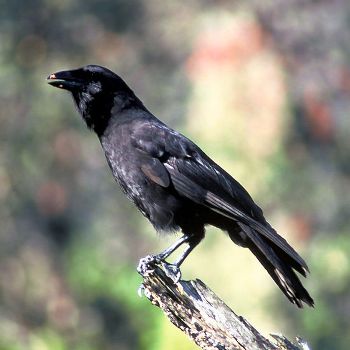 The ‘Alala. Photo by: US Fish and Wildlife Service. |
A lesser Hawaii: Like the Yangtze river system, the Hawaiian islands—famous for unique birdlife—is an extinction hotspot.
In 2002 the ‘Alala, also known as the Hawaiian crow, went extinct in the wild when the last two known individuals vanished. The bird suffered from a number of threats, including habitat loss, introduced rats, mongooses, and disease, as well as illegal collecting. The ‘Alala was not the first: fossils show that four other crows have already gone extinct in Hawaii. But the ‘Alala has long held a special place in Hawaiian culture: native Hawaiians considered the crow a household god.
Fortunately the last word has yet to be written for the ‘Alala since over 50 individuals survive in captivity and the possibility of reintroduction is being discussed.
Another of Hawaii’s birds is not so lucky: the Po’ouli or Black-faced honeycreeper went extinct in 2004. Unknown to science until the 1970s, the shy bird was endemic to the island of Maui alone. By the beginning of the decade only three individuals were known to survive. One died in captivity in 2004, the other two have not been seen since.
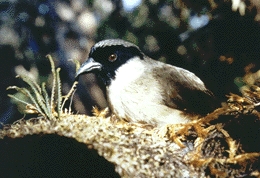 The Po’ouli. Photo by: US Fish and Wildlife Service. |
While other Po’oulu could survive, no one knows for sure and it seems unlikely to find a healthy breeding population. Unlike the ‘Alala reintroduction is an impossibility.
The birds are only the most recent representatives of a long decline in Hawaiian native species: half of Hawaii’s 140 historically-recorded endemic bird species are gone forever.
Big Mammals No More: In addition to the baiji, the decade saw the extinction of two other large mammals.
In an ignoble end, the world’s last Pyrenean ibex was killed by a fallen tree at the opening of the decade, January 6th, 2000. A subspecies of the Iberian ibex, the Pyrenean ibex once roamed across the Pyrenees in both France and Spain, but spent most of the Twentieth Century on the verge of extinction. Nine years after its extinction, the species returned for a moment: a clone of the subspecies was born—the first clone of an extinct animal—but died from lung failure after a few minutes.
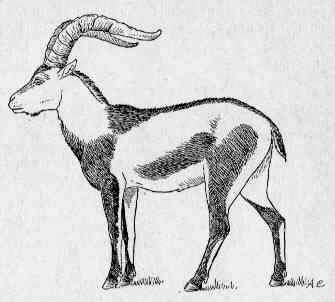 Illustration of the Pyrenean ibex. Image from Cabrera, A. (1914). |
The western black rhinoceros also met its end during this decade. Hunted relentlessly for its horn, the rhino went from thousands historically to ten individuals hanging on in Cameroon. By 2006, however, a survey found that none of the rhinos remained.
Rhinos are one of the world’s most threatened big mammals: of the five remaining species, three are Critically Endangered, one is Endangered, and only the white rhino appears secure from extinction.
Poaching is behind the global decline in rhinos, and the end of this decade has seen poaching on the rise. Unless action is taken quickly to stop the illegal wildlife trade, it is not improbable that the next decade will see more rhino extinctions.
Amphibian Armageddon: The past few decades have been particularly perilous for amphibians. Devastated by a still-mysterious disease, the chytrid fungus, and hit by climate change, habitat loss, and pollution, the particularly-sensitive family of amphibians is in the midst of an extinction crisis.
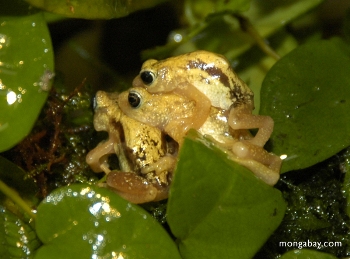 The Kihansi spray toads mating in captivity. Photo by: Rhett A. Butler. |
The Kihansi spray toad vanished from its home in the middle of the decade. Living adjacent to a waterfall and gorge in Tanzania, the toad survived on only two hectares of land, but when the World Bank built a dam in the area, the flow of the waterfall was changed and the toad could no longer thrive in the altered habitat. Surveys found fewer and fewer toads until they found none.
Like many amphibians that vanish from the wild, a population of Kihansi spray toads still survives in captivity in the United States. Reintroduction would only be possible if their native habitat can be made to support the toads again.
The Panamanian golden frog—a beautiful black and gold species—also likely vanished from the wild during the last years of the decade. A national symbol in Panama, the frog was devastated by the chytrid fungus and habitat destruction. Like the Kihansi spray toad, the Panamanian golden frog survives in captivity, but its future is hardly secure.
These are but a small representation: researchers estimate that more than 120 species of amphibians have likely gone extinct since 1980. With climate change scenarios growing increasingly dire, rampant deforestation, continuing pollution, and no cure yet to the chytrid fungus, it’s unlikely the 2010s will be any better for amphibians.
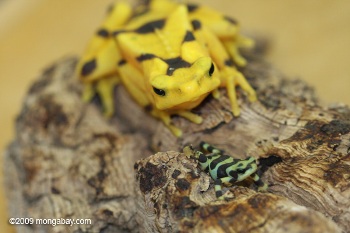 The Panamanian golden frog with green infant. Photo by: Rhett A. Butler. |
The Vanished Forgotten: While extinctions of mammals, birds, and amphibians garner the most media attention (in that order), invertebrates and plants are vanishing just as frequently.
Sometime between the end of the 1990s and during the beginning of this decade, the last Aldabra banded snail succumbed to desiccation. Little-known, this snail was endemic to the Aldabra atoll. Since the snail hibernates during dry periods, less rainfall over the Aldabra atoll due to global warming likely spelled its doom.
Another invertebrate lost to climate change is the European land leech. A survey between 2000-2005 found only a single living European land leech. The researchers believe that a rise of 3 degrees Celsius during the summertime has doomed the leech, which is adapted specifically to the cold.
Climate-sensitive species from polar bears to pikas to frogs to coral reefs are facing an uphill battle to survive in our warmer world. Extinctions due to climate change will likely become even more common in the next decade.
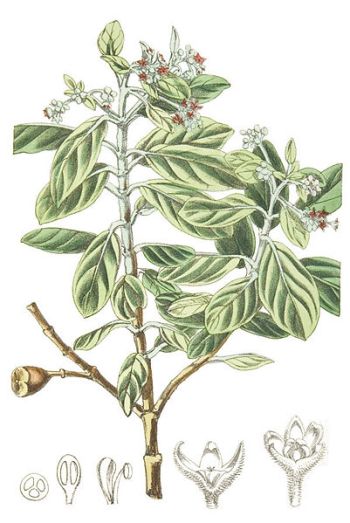 Illustration of the St. Helena olive. Drawing by: John Charles Meliss (1875). |
Invertebrates are not the only little-known and often overlooked species. Plant extinctions—or discoveries for that matter—rarely make the news. In December 2003, the last St. Helena olive died in captivity. Prior to this, the species had vanished from the wild in 1994.
Endemic to St. Helena Island, the St. Helena olive perished from deforestation and the introduction of alien species like goats. No one knows how many plants have vanished during 2000-2009, but with high rates of rainforest destruction in many nations, it is likely that a large number of plants—many unknown to science—were lost in the last ten years.
Goodbye and maybe hope?: The last known wild Spix’s macaw disappeared from Brazil in 2000. This beautiful macaw was battered by habitat loss and trapping for the pet trade. It is possible some wild macaws still remain, but more surveys are necessary. Still, even if no wild Spix’s macaws remain, the species has a chance.
A small population of Spix’s macaws survive in captivity and there has been recent success at reproduction, especially at Al Wabra Wildlife Preserve which has bred 21 birds since 2004. In addition, Al Wabra has purchased Spix’s macaw habitat in Brazil for possible future reintroduction.
Spix’s Macaw probably has the most hope of surviving the next ten years of any of these twelve. For the unfortunate others, this decade was their last stand.
List of (likely) extinct species, 2000-2009:
Baiji (Lipotes vexillifer)
Chinese paddlefish (Psephurus gladius)
‘Alala (Corvus hawaiiensis)
Poo-uli (Melamprosops phaeosoma)
Pyrenean ibex (Capra pyrenaica pyrenaica)
Western black rhinocerous (Capra pyrenaica pyrenaica)
Kihansi Spray Toad (Nectophrynoides asperginis)
Panamanian golden frog (Atelopus zeteki)
Aldabra banded snail (Rachistia aldabrae)
The European land leech (Xerobdella lecomtei)
Illustration of Chinese paddlefish which can grow over 7 meters. Drawing by: Günther, Albert C. L. G. (1880).
Related articles
Extinctions on the rise in the Galapagos: fishing and global warming devastating islands’ species
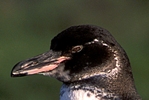
(12/03/2009) We may never see again the Galapagos black-spotted damselfish, the beautiful 24-rayed sunstar, or the Galapagos stringweed. These species from Galapagos waters may all very well be extinct. Other species are on the brink, such as the Galapagos penguin and the Floreana cup coral. A new report in Global Change Biology reveals that in just a matter of decades, overfishing and climate change has devastated the Galapagos’ unique and famous ecosystems.
Face-to-face with what may be the last of the world’s smallest rhino, the Bornean rhinoceros

(12/01/2009) Nothing can really prepare a person for coming face-to-face with what may be the last of a species. I had known for a week that I would be fortunate enough to meet Tam. I’d heard stories of his gentle demeanor, discussed his current situation with experts, and read everything I could find about this surprising individual. But still, walking up to the pen where Tam stood contentedly pulling leaves from the hands of a local ranger, hearing him snort and whistle, watching as he rattled the bars with his blunted horn, I felt like I was walking into a place I wasn’t meant to be. As though I was treading on his, Tam’s space: entering into a cool deep forest where mud wallows and shadows still linger. This was Tam’s world; or at least it should be.
Kihansi spray toad goes extinct in the wild
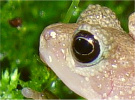
(11/04/2009) This year’s IUCN Red List has updated its assessment of the Kihansi spray toad, moving the species from Critically Endangered to Extinct in the Wild. With that another amphibian species has been lost to a combination of habitat loss and the devastating amphibian disease, the chytrid fungus. The Kihansi spray toad Nectophrynoides asperginis, which still survives in a number of zoos in the United States, had lived on just two hectares along the Kihansi gorge in Tanzania. The toad was specially adapted to the spray region of the Kihansi waterfall, which kept its small environment at a constant temperature and humidity.
Governments, public failing to save world’s species
(11/04/2009) According to the International Union for the Conservation of Nature’s (IUCN) 2008 report, released yesterday, 36 percent of the total species evaluated by the organization are threatened with extinction. If one adds the species classified as Near Threatened, the percentage jumps to 44 percent—nearly half.
The Yangtze River may have lost another inhabitant: the Chinese paddlefish
(10/22/2009) In December of 2006 it was announced that the Yangtze River dolphin, commonly known as the baiji, had succumbed to extinction. The dolphin had survived on earth for 20 million years, but the species couldn’t survive the combined onslaught of pollution, habitat loss, boat traffic, entanglement in fishing hooks, death from illegal electric fishing, and the construction of several massive dams. Now, another flagship species of the Yangtze River appears to have vanished.
Rhino poaching epidemic underway in South Africa
(09/10/2009) In July national parks in South Africa lost 26 white rhinos and one black rhino to poachers, bringing the total rhinos lost to in South Africa to 84 this year alone. The situation has led Water and Environmental Affairs Minister Buyelwa Sonjica to call for an integrative approach to the crisis.
Discovering nature’s wonder in order to save it, an interview with Jaboury Ghazoul

(09/08/2009) Sometimes we lose sight of the forest by staring at the trees. When this happens we need something jarring and eloquent to pull us back to view the big picture again. This is what tropical ecologist Jaboury Ghazoul provided during a talk at the Association of Tropical Biology and Conservation (ATBC) meeting this summer in Marburg, Germany. Throwing out a dazzling array of big ideas and even bigger questions—incorporating natural history, biodiversity, morality, philosophy, and art—the enthusiastic Ghazoul left his audience in a state of wonder.
Save the frogs, save ourselves

(09/04/2009) Amphibians are going extinct around the globe. As a scientist specializing in frogs, I have watched dozens of species of these creatures die out. The extinction of frogs and salamanders might seem unimportant, but the reality couldn’t be farther from the truth. Indeed, from regulating their local ecosystems, to consuming and controlling the population of mosquitoes and other insects that spread disease, to potentially pointing the way to new drugs for fighting diseases such as cancer or HIV-AIDS, the fate of these creatures is inexorably linked to our own.
869 species extinct, 17,000 threatened with extinction
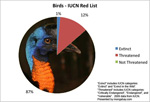
(07/02/2009) Nearly 17,000 plant and animal species are known to be threatened with extinction, while more than 800 have disappeared over the past 500 years, reports the International Union for Conservation of Nature (IUCN). While these numbers are substantial, they are likely “gross” underestimates since only 2.7 percent of 1.8 million described species have been assessed. The IUCN report warns that governments will miss their 2010 target for reducing biodiversity loss.
New Yangtze River dam could doom more endangered species
(06/22/2009) Eight Chinese environmentalists and scientists have composed a letter warning that a new dam under consideration for the Yangtze River could lead to the extinction of several endangered species. The letter contends that Xiaonanhia Dam, which would be 30 kilometers upstream from the city of Chongqing, will negatively impact the river’s only fish reserve. Spanning 400 kilometers in the upper Yangtze, the reserve is home to 180 fish species, including the Endangered Chinese sturgeon, and the Critically Endangered Chinese paddlefish, as well as the finless porpoise.
Could America’s 700 billion stimulus have saved life on earth?
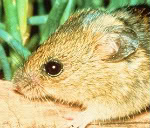
(02/26/2009) In a January op-ed in Science, ecologist Jaboury Ghazoul wistfully and wittily ponders how far the 789 billion stimulus bill recently passed by the US Congress could go toward saving our planet’s embattled life-forms. In his essay, Ghazoul suggests we put the 700 billion “in the context of the species extinction crisis”. According to various scientific analyses the extinction rate is currently 100 to 1,000 times the average. Such a catastrophic loss of species—while making the world a lonelier and less interesting place—will unpredictably reshape ecosystems we depend on, causing social, political, and economic upheaval.
Symposium tackles big question: how many species will survive our generation
(01/16/2009) Nine scientists dusted off their crystal balls Monday at the National Museum of Natural History in Washington DC, weighing in on the future of the world’s tropical forest. Despite the most up-to-date statistics, prognosis for the future of tropical forests varied widely. In the last few years a schism has occurred among biologists regarding the future of the tropics. No tropical scientist denies that rainforests and the species which inhabit them face unprecedented threats; neither do they argue that some of these forested regions and species will likely not survive the next fifty years. What has sparked debate, sometimes heated, is how bad will is it really? When the dust settles, what percentage of species will survive and how much forest will remain?
Prioritizing amphibian species for captive breeding to save them from extinction
(11/13/2008) Frogs, toads, salamanders and other amphibians are disappearing at an alarming rate. Of approximately 6,000 amphibian species in the world, about one third are classified as threatened or endangered. A disease caused by a chytrid fungus has devastated frogs living in mid to high elevation streams worldwide. Amphibians also face habitat destruction as forests and wetlands are developed and polluted by agricultural chemicals. In Panama, highland frog populations west of the Canal have declined at an alarming rate.
12 fish species go extinct in lake near Istanbul
(09/24/2008) Turkey has lost twelve species of fish to pollution in Lake Sapanca. Lake Sapanca used to be one of Turkey’s most bio-diverse lakes. A decade ago the lake’s water was pristine enough to be pumped directly to Istanbul for citizen use, but due to rising pollution it no longer serves as a source for the city water.
The extinction of the baiji a ‘wake-up call’ to conserve vaquita and other cetaceans
(08/25/2008) In December of 2006 an expedition spent six weeks surveying the Yangtze River in China for one of the world’s rarest cetaceans, the baiji. Also known as ‘The Goddess of the Yangtze’ the shy river-dolphin had roamed the river for millions of years locating fish with echolocation. The survey came back empty-handed without a spotting a single dolphin. Dr. Jay Barlow, a member of the surveying team, described his emotions on the expedition’s findings in an interview with Mongabay.com: “I was stunned. I knew the species was in trouble, but I did not think they were already gone. We really had not seen the extinction of a large mammal species in 50 years, so we grew complacent.”
Amphibians face mass extinction
(08/11/2008) Amphibians are in big trouble. At least one third of the world’s 6,300 known species are threatened with extinction, while at least 200 species have gone extinct over the past 20 years. Worryingly the outbreak of a deadly fungal disease, chytridiomycosis, is spreading throughout the tropics leaving millions of victims. A new study, published in the early edition of the Proceedings of the National Academy of Sciences, warns that there is “little time to stave off a potential mass extinction” of frogs, salamanders, and caecilians.


